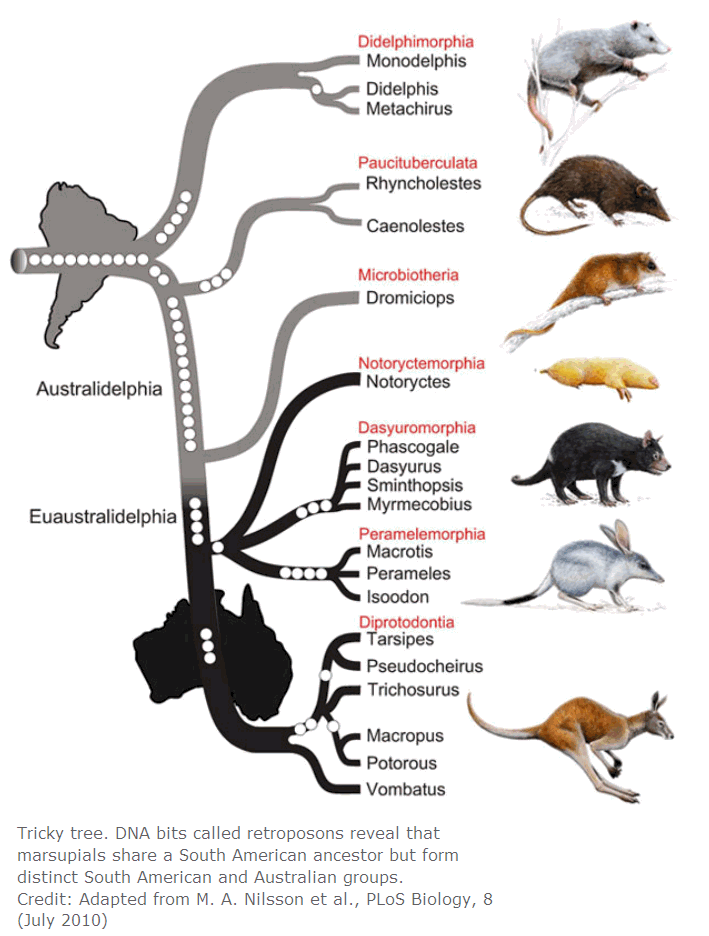|
|
|
|
|
|
|
News & Views item - July 2010 |
![]() Tracking Marsupial Evolution Through Retroposons. (July 28, 2010)
Tracking Marsupial Evolution Through Retroposons. (July 28, 2010)
Retroposons are segments of chromosomal DNA which dissociate from their original position and then reinsert themselves elsewhere in the genome where they remain sufficiently stable to be recognizable following their reinsertion.
Over 300 marsupial species live in the Americas and Australia and the relationship between the two populations has proved to be an enigma with data from DNA sequencing and fossil records fostering conflicting interpretations.
A paper published in the July 2010 issue of PLoS Biology by Maria Nilsson, et al. Institute of Experimental Pathology (ZMBE), University of Münster, Germany, now appears to have resolved the issue.
Writing in ScienceNow, Gisela Telis writes:
Nilsson compared the retroposon lineups of the South American opossum, Australian tammar wallaby (a kangaroo), and 20 other species, including the common wombat, wallaroo, and marsupial mole. All marsupials shared the same 10 retroposons, confirming that they all share a common ancestor. The South American marsupials had undergone fewer retroposon copy-and-paste incidents, which suggests that they form the older branches of the tree. That opossums lacked two nearly universal retroposons may indicate that they are the closest, genetically speaking, to the marsupial ancestor, Nilsson says. Even the mysterious Monito* found its place: It shares certain genetic features with Australian marsupials, but it is definitely more closely related to its fellow South Americans.
The retroposon data also clearly divided Australian and South American
marsupials into distinct groups—a hint that the animals enjoyed little contact
as they evolved.
Evolutionary biologist Matthew Phillips of the Australian National University says the work represents: "a really big step forward in terms of [understanding] marsupial relationships."

_______________________________________
*"Monito del Monte ('little mountain monkey'). Rare and tiny [mouse-sized] marsupial lives only in the rainforests of the southern Andes in Chile and Argentina, but it gets classed with its Aussie brethren based on similarities between its ankle and ear bones and those of an extinct Australian marsupial. Some researchers take the Monito as evidence of more complex migration, but others remain unconvinced because the DNA data are inconclusive."